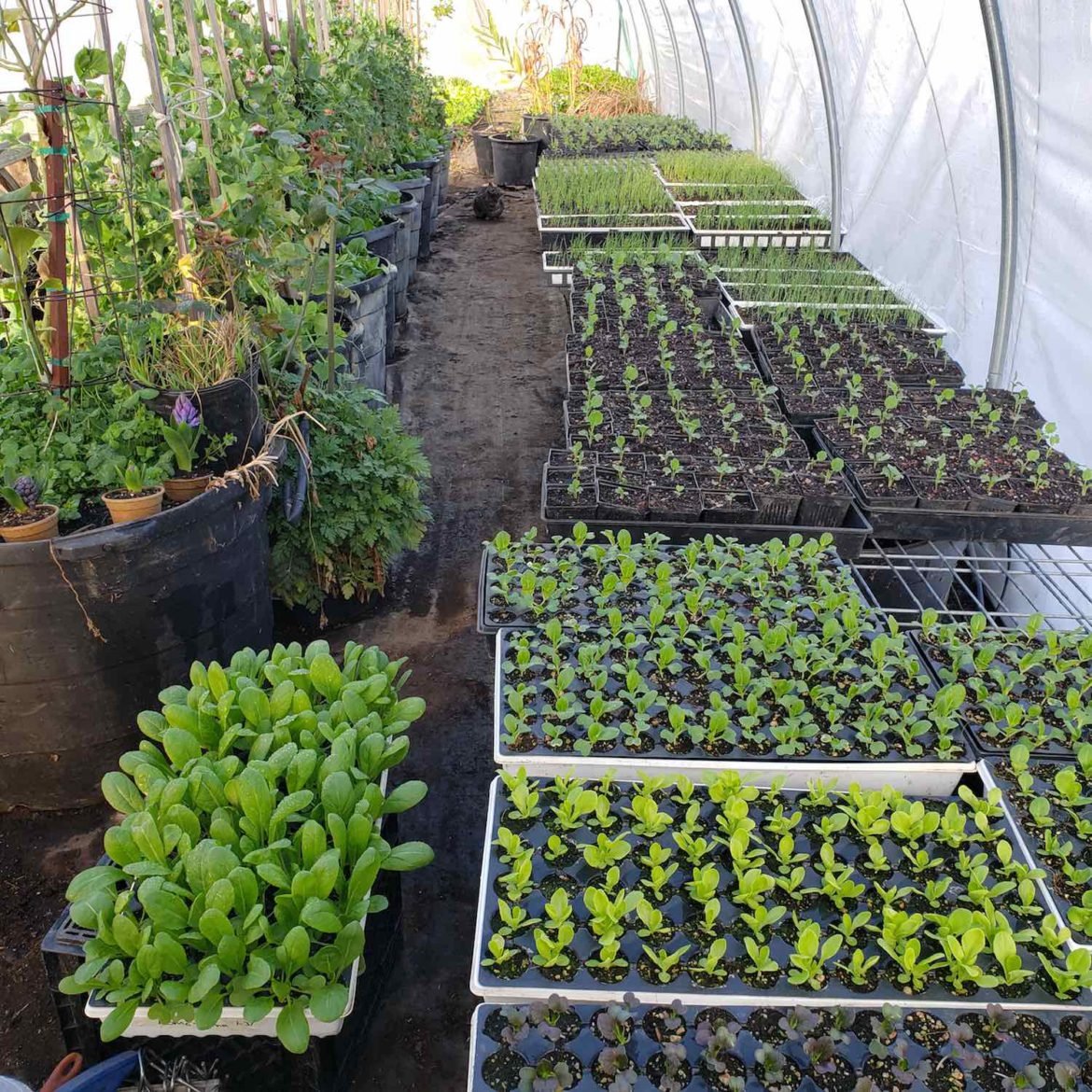This is our farm column from farmer Casey O’Neill. O’Neill is the owner operator of HappyDay Farms north of Laytonville, and a long time advocate for the cannabis community in Mendocino Co; more of his writing can be found here. The opinions expressed in this column are those of the writer. If you would like to submit a letter to the editor feel free to write to [email protected].
How much food should we grow? Well, how much can we sell each week? What are our goals for donation to food banks? How much can we harvest and process in a day? Each of these questions provides an endpoint from which to work backwards in a planning process that moves in reverse.
If I know how much produce I can move in a week, then I know how much I need to harvest. In order to harvest, crops must be sown at a specific time from days to months before the harvest date. Beds must be prepped in order to receive either seeds or transplants, and before that seeds must be ordered or saved on the farm.
The cycles from preparation to harvest are varied and interlocking. Radishes take about 3 weeks, leeks will hold for a year, and fruit trees last a lifetime. Where things are planted is governed by space, proclivity and practice. Do we notate that we grew too many tomatoes so that we don’t repeat the mistake next year?
One of my great weaknesses as a farmer is an inability to say no to plants that are in the hoophouse. I always feel compelled to find them a home, which often means planting things that weren’t in the plan because of my desire to honor a commitment made to the seed.

Growing crops and raising livestock marks a commitment to process and practice, a deep and abiding love for individuals and the collective that they create in concert. This year I’m working to practice clear boundaries with my crop planning, not allowing the plants to get the better of me.
I want to plant enough tomatoes, but not so many that they don’t all get looked after and we have wasted space on them. I want to grow enough salad mix that we can provide as much as we can market or donate, but not so much that we can’t harvest it on time and it goes by. I want to have a clear enough plan that we rotate succession plantings to maintain consistent harvests without excess.
It gets a little better every year as we refine what we do. We get more clear in the “how” by refining each step so that we know what to expect. If I have a good estimate of how many days it takes from sowing to harvest on each crop, I can build a crop plan that takes these expectations into account.
There are shifting variables that must be evaluated in crop planning. Everything takes longer during the colder months with shorter days, but this graph isn’t linear. The uncertainty in weather can speed things up or slow them down, so planning has to take into account a certain amount of variation.
If the only constant is change, but the more things change the more they stay the same, then I can look at what I’ve done in the past and use it to project forward into the future. I can also use my intuition and my sense of the present to make decisions in the moment without being overwhelmed by predictive data or potential concerns.
The balance comes in being informed by the past and projecting the future without losing sight of awareness. It is from the present moment that all action occurs, and to ruminate and worry disconnects me from the guidance of intuition. I need to know without fear and evaluate without nervousness, which is often easier said than done.
There is a human tendency to desire constancy and familiarity. I feel discomfort with change and struggle to let go of the past. The more I put my practices down on paper through proper planning, the more I provide structure for my experience of each moment.
We’re taught to think of structure as confining, as rigidity that takes away freedom, but I find that structure creates opportunity for presence. The less I have to think when it’s time to work, the easier the tasks become and the greater the flow. When the flow is organic, refinements arise like bubbles to the surface when water boils, enervating and sparking joy.
As I refine the structure for the “how”, it is guided and defined by the “why”. Each acts on the other in concert, a dialectic of push and pull that moves towards a higher aspiration of praxis. Each day is an opportunity for growth, for new knowledge, for betterment. As always, much love and great success to you on your journey!
Casey O’Neill owns and runs HappyDay Farms, a small vegetable and cannabis farm north of Laytonville. He is a long time cannabis policy advocate, and was born and raised in the Bell Springs area. The preceding has been an editorial column. The Mendocino Voice has not necessarily fact-checked or copyedited this work, and it should be interpreted as the words of the author, not necessarily reflecting the opinions of The Mendocino Voice.



